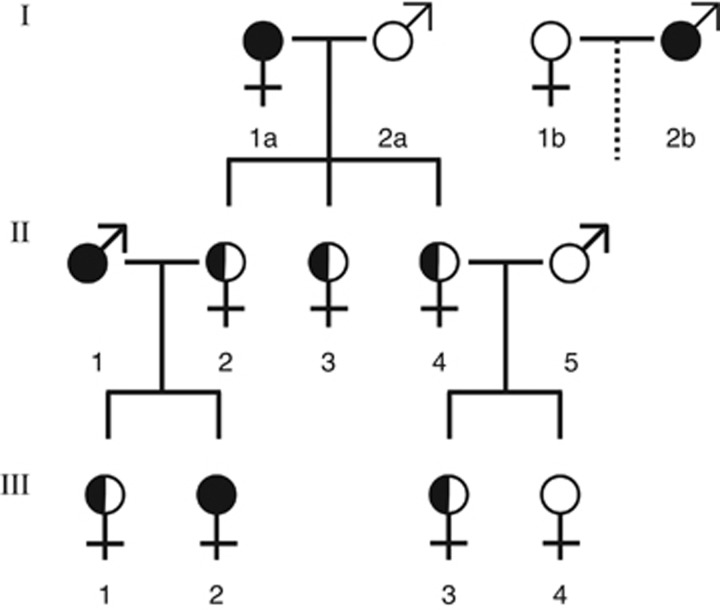Figure 2.
Pedigree showing backcross crosses performed using artificial insemination. Solid black fill indicates individuals homozygous for the putatively recessive thelytoky-determining allele of the thelytoky locus. Half-filled circles indicate heterozygous individuals and white fill indicates individuals homozygous for the putatively dominant arrhenotoky-determining allele. For the first generation, both Capensis queen (I:1a) x Scutellata male (I:2a) and Scutellata queen (I:1b) x Capensis male (I:2b) crosses were created. Queen offspring of these queens were reciprocally backcrossed to single Scutellata and Capensis males. Offspring of workers were collected in all colonies after dequeening. Under a recessive mode of inheritance, as proposed by Lattorff et al. (2005), only workers with solid fill (i.e.III-2) should reproduce thelytokously. Colonies without workers of this genotype will therefore produce only males.

